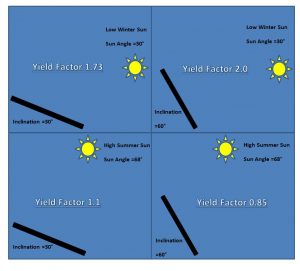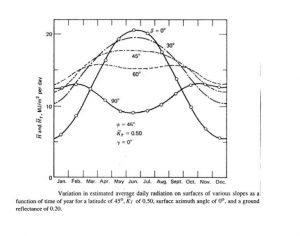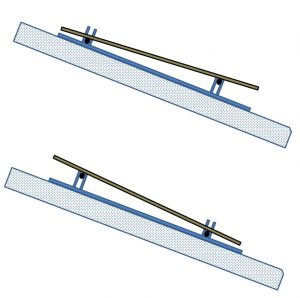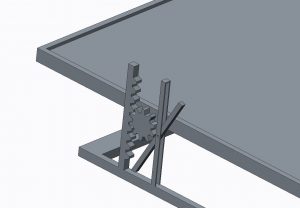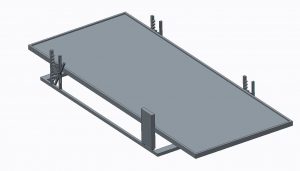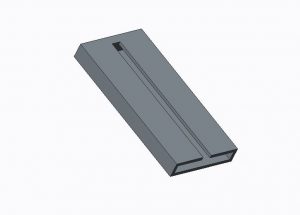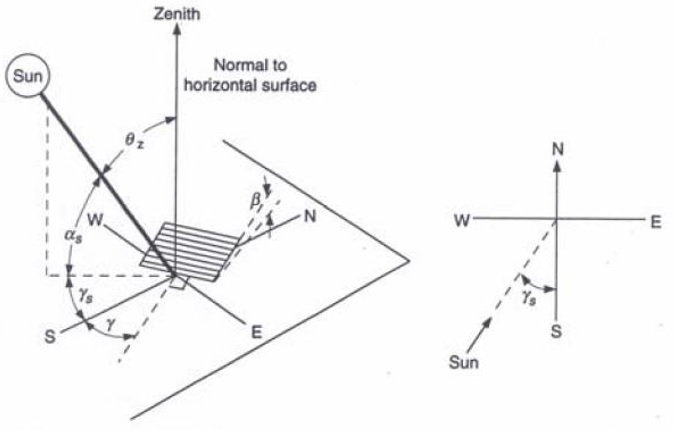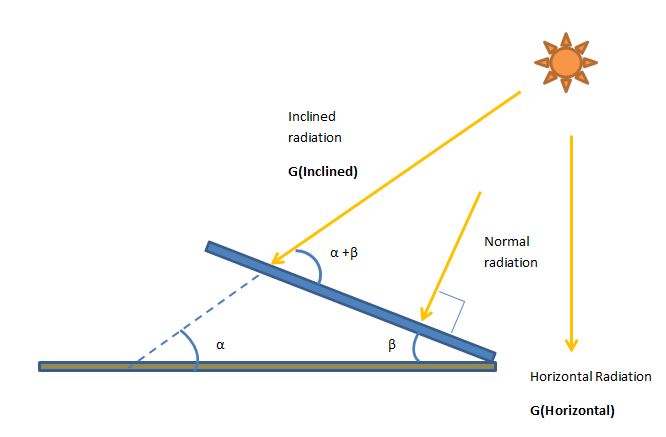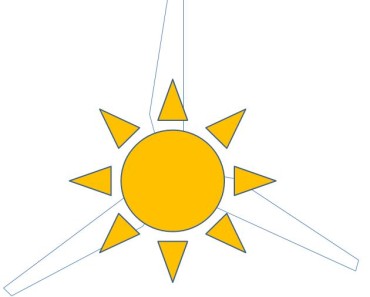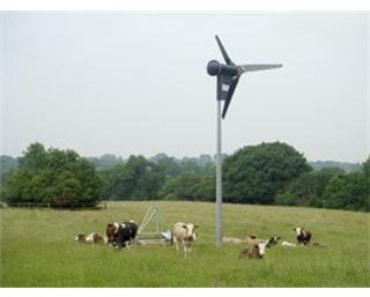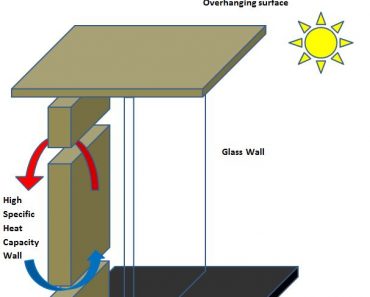The yield improvement measure mentioned in this article is applicable to both roof top Solar PV panels and Solar Water Heaters.
Orientation of Solar collectors plays an important role in determining their annual output. Generally, as a rule of thumb, panel installations are carried out on South facing roof in the Northern hemisphere and North facing roof in the Southern hemisphere. Similarly, inclination of the solar panels (both PV or hot water) also plays an important role in energy collection over the seasons. During the winters, when the sun rises low on the horizon, a higher inclination angle (from horizontal) would allow panel to see more of the Sun and thus collect more light/heat. On the other hand, during the summer time, when the Sun spends a lot more time sitting high on the horizon, a lower inclination angle increases the yield. This is illustrated in the picture to the right.
It should be noted that for places near the equator, inclination change does not make much of the difference because there is very little variation in the Sun path during the year. However, for places away from the equator, particularly for latitudes above 45 degree, change of inclination can make a huge difference and can improve the yield by 30%. The image on the right shows Solar gain during winter and summer months for latitude of 45 degree. As can be seen, during low winter sun (at 30 Degrees) when the panel is inclined is at 60 degree, it receives twice the amount horizontal insolation. In comparison a panel that is inclined at 30 degrees receives 1.73 times the horizontal insolation. Similarly a panel tilt of 30 degrees during high summer sun receives more radiation than a 60 degree tilt. The idea is to have the panel as perpendicular to sunrays as possible.
The calculations for solar gain for any location (based on latitude) can be carried out through the online calculator on the following website.
A more detailed picture of yield improvement can be understood from the curve (below) taken from Solar Engineering of Thermal processes by Duffie and Beckman.
Again this curve highlights that higher inclination during winter and lower inclination during summer can improve yield significantly.
Roof top solar water heaters and PV panels are fixed i.e. their orientation or inclination cannot be changed. They are normally installed on aluminium brackets such that the panels are parallel but not sitting flush against the roof. A gap is maintained between the roof and panel that helps in avoiding the build- up of access heat, particularly in the case of PV panels.
In many countries where planning permission is required by the local council to install Solar Panel on the roof, certain regulations have to be followed. These regulations include the maximum distance the panel can sit parallel to the roof. For example in the UK, Solar Panels cannot be more than 200 mm from roof wall or slope surface.
In light of the benefits of changing the tilt during the seasons and the restrictions posed by regulations, a new type of mounting bracket is proposed herein that can help in increasing the yield. As mentioned earlier, traditional brackets do not have the ability to change the angle of the panel. The new design will be easy to install and will allow changing of the angle. Furthermore, the change of panel angle can be carried out without the need to climb the roof and can be done with a mechanism similar to the string pulling mechanism in drapes/ blinds.
As shown in the picture gallery (below), the Solar Panel is hinged to a bar that is connected to a vertical rack and pinion. The gear is free to rotate but has can be stopped by changing the angle of the hinged lever opposite to the rack, to counter the gravitational pull. The rotation of the pinion allows it to climb up or roll down between the rack and lever. The difference of elevation between the two bars would allow the angle of the panel to be increased or decreased. A sleeve shown in the picture gallery would not only confine the movement of gear but also allow weather proofing for any grease /lubricant used for the gearing system. Even if the angles are changed twice a year, the yield could be improved by over 20 per cent. The detailed 3D CAD design of the proposed moveable bracket can be seen in the gallery.
It is estimated that the additional cost of frame would be less than £20 per panel of dimension 990 mm x 1600 mm (250 Watt) panel.
- Solar Panel with Inclination Changing Frame 1
- Solar Panel with Inclination Changing Frame 1
- Sleeve for Rack and Pinion for weather proofing
The inclination changing mechanism can be made simpler and even more cost effective by using pin locks and holes in frame or even lead screws. However compared to the rack and pinion design, both the pin-hole mechanism and lead screw design would require handling the panels on the roof, which could be dangerous. In the proposed model, the inclination can be changed, by two set of strings wrapped around the bars. Similar to window blind mechanism, these strings can be pulled from any desired point of access, even from behind the roof.
Generally, the roof pitch in Scotland is around 45 degrees. The city of Edinburgh in Scotland is located at a latitude of 56 degrees. The city is closer to the North pole than it is to the equator which implies that there is a huge variation in solar irradiation through the seasons. In fact the difference between the solar radiation during winters could be 10 times the insolation received during summer (100 Watts/m2 of horizontal insolation in winter compared to 1000 Watts/m2 in summer). For this reason, it makes much more sense to make the most of precious little sunshine during the cold period.
The further the location of PV panel from the equator, the higher the feasibility of changeable inclination frame. For example in Scotland, if a set of panels with fixed frames is able to produce 1000 kWh, with movable frame it could yield as much as 1300 kWh. The extra 300 kWh can mean a saving of £75 (at 25 pence /units). A this rate, the cost for the modification in the fame can be covered within an year. The proposed design changes can also be incorporated on the panel frames that are already installed.
Please feel free to comment and share this article using the buttons below.

